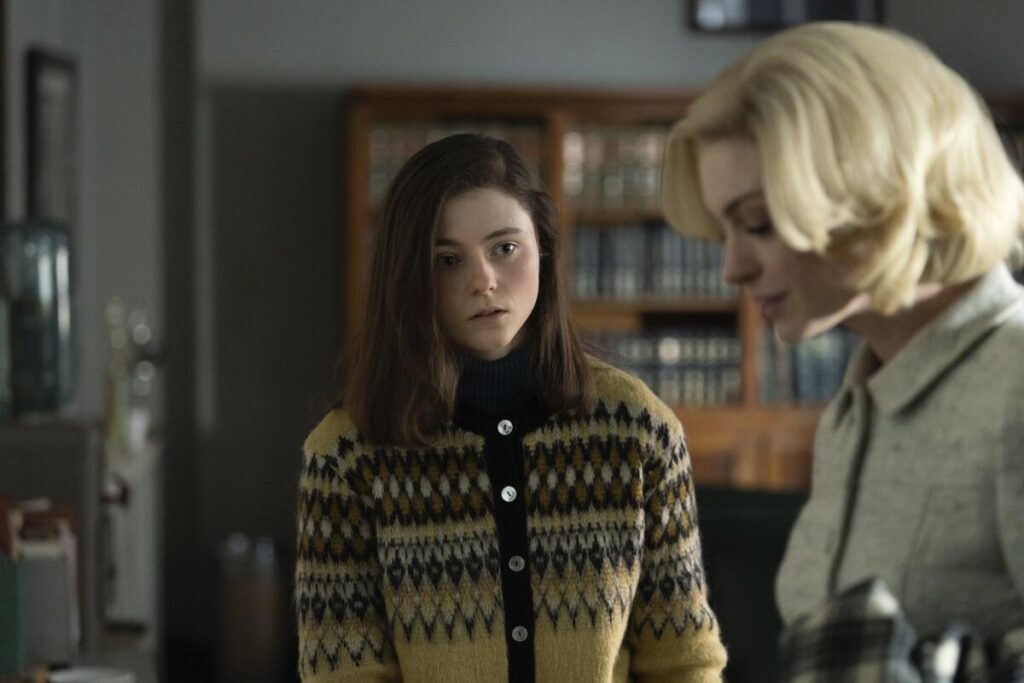
Smoke gets in more than just your eyes in Eileen; it fills up your lungs and seeps into your pores. Directed by William Oldroyd from a script by Luke Goebel and Ottessa Moshfegh (adapting the latter’s novel), this sly and engrossing psychological thriller wields fog like a haunted-house barker, cloaking its characters and vehicles in clouds of swirling vapor. Seductive imagery aside, the omnipresent haze is a fitting device for a movie that obscures its intentions, priming you for a queasy study of obsession before pivoting into a nightmare of a different sort.
This isn’t to imply that Eileen, in its bold strokes, is especially novel or even surprising. Its titular heroine, played with supple intensity by Thomasin McKenzie, is a familiar type: a loner whose existence is so mundane, she can scarcely give voice to her repressed desires. Eileen works at a juvenile detention center in Nowheresville, Massachusetts, where she mindlessly frisks female visitors and shuffles inmates through corridors. On her evening commute, she stops by the liquor store; when she arrives home at her ramshackle house, she places the fresh bottles at the feet of her drunken father (Shea Whigham), collecting the day’s empties without comment. She’s less a wallflower than a smear of taupe.
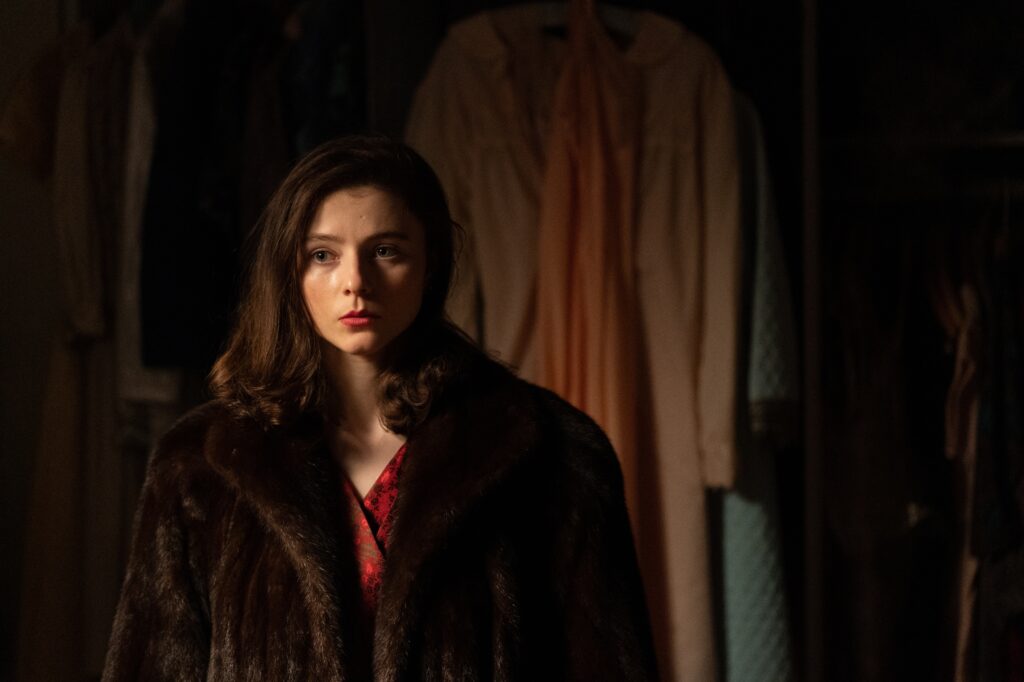
Eileen’s grim and meager circumstances might suggest a character study of feminine misery, but Oldroyd is after something more elusive and complex. His first feature, Lady Macbeth, was a simmering scorcher starring Florence Pugh as a trapped 19th-century housewife whose pitiful confinement camouflaged an underlying passion and ferocity. Early on, Eileen exhibits her own share of stealthy hunger, which mostly takes the form of spontaneous masturbation. We first see her in a fogged-up car—its mechanical failure prevents its windshield from defrosting, you see—peeping at a couple making out in their own backseat, before she grabs a fistful of New England snow and stuffs it down her pants, as though to quench a fire. Later, at work, when she isn’t staring at a lanky teenage convict (Sam Nivola) idling in the yard, she’s fantasizing about one of the guards (an overqualified Owen Teague) shoving her up against the concrete wall. For a time, it’s unclear if these compulsive behaviors are an indication of darker troubles or are just the frustrations of a woman who really needs to get laid.
This fuzziness sharpens upon the arrival of Rebecca, a psychologist whom the warden introduces as hailing from Radcliffe. (“Harvard,” she corrects him.) Eileen is set in the early ’60s, at the dawn of the women’s liberation movement, and Rebecca represents an upheaval to the prison’s dreary and antiquated status quo. Eileen is instantly fascinated by her new colleague, with her bottle-blond hair and authoritative demeanor. Where Eileen is meek, rumpled, and ordinary, Rebecca is confident, visible, and glamorous. In related news, she’s played by Anne Hathaway.
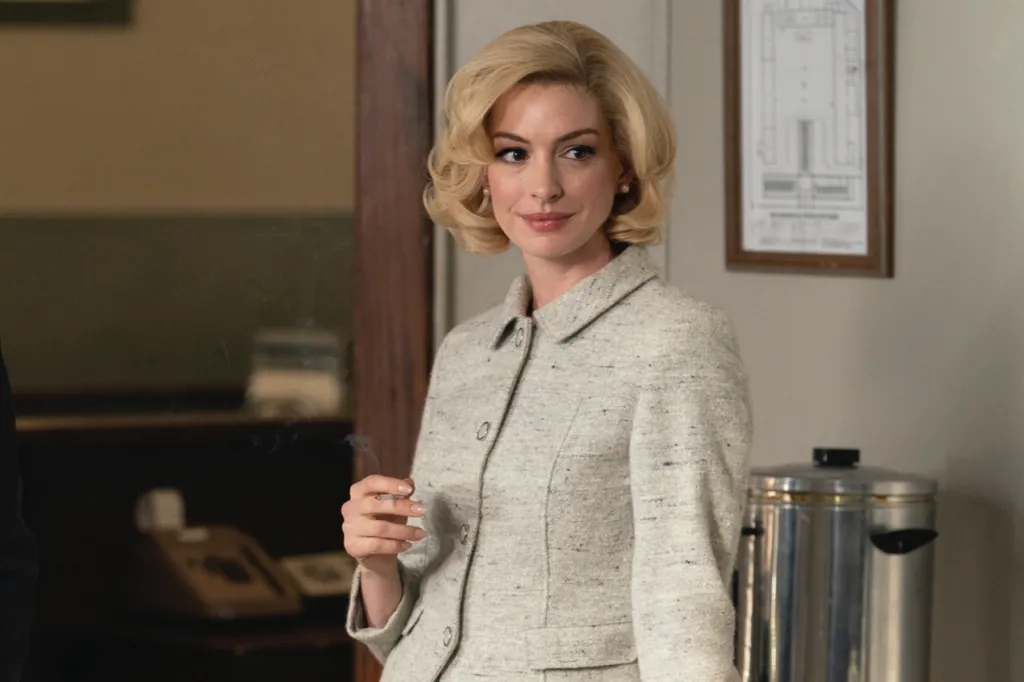
This is splendid casting. Hathaway isn’t outrageously tall, but Oldroyd and his cinematographer, Ari Wegner (The Power of the Dog), shoot her as though she’s a supermodel, towering over the pathetic townies who are foolish enough to stray into her path. McKenzie is hardly plain—one character describes Eileen’s face as possessing a “beautiful turbulence”—but she has a knack for blending into the scenery that Hathaway so prominently stands out from. The actors’ physical and temperamental contrast recalls the disparity between Jacob Elordi and Barry Keoghan in Saltburn, but where that movie used the characters’ asymmetrical affection as a jumping-off point for ghastly provocation, Eileen is more nuanced and distressing. And while it is similarly about the dangers of obsession, the potential madness of its central character is more internal and enigmatic.
Rebecca’s appearance catalyzes something in Eileen—even her perpetually disappointed dad characterizes her as “almost interesting”—and Oldroyd observes her emergence like (to borrow from another recent picture) a caterpillar morphing into a butterfly. In the movie’s most beautiful and enticing scene, Eileen meets Rebecca for drinks at the local watering hole, dolling herself up and unearthing a gorgeous black dress that seems imported from a different planet. The hour they spend together—sharing anecdotes, fending off leering men, even briefly switching identities—cements Eileen’s attraction to Rebecca, even as it amplifies the film’s rumbling disquiet.
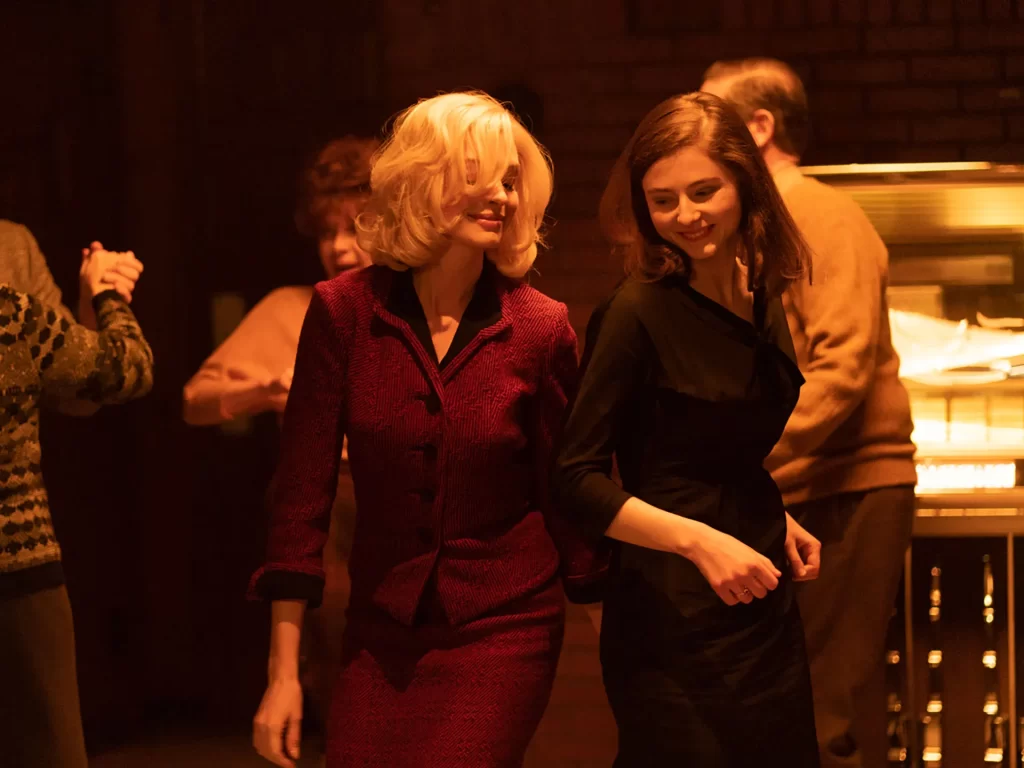
There is, quite plainly, something wrong with Eileen—an imbalance that Oldroyd teases out through off-kilter editing and jagged dream sequences. Twice we see her use Chekhov’s her father’s rusty pistol—once to blow her own head off, later his—only for Oldroyd to reveal these bursts of violence as the ideations of a gradually splintering mind. She also appears to visit an eerie clearing, only to learn that she imagined the whole venture. This sweeping instability does more than just unnerve you; it forces you to question Eileen’s reliability as a point-of-view character. How much of what we’re seeing are just fragments of her visions? Is Rebecca even real, or the concoction of a fabulist who’s desperate for connection?
The consequence of this construction can be harmful as well as suspenseful; when you’re constantly waiting for the rug to be pulled from beneath your feet, you spend a lot of time focusing on the floor. To its credit, Eileen predictably delivers a third-act twist that’s genuinely unpredictable; I won’t divulge the details, except to say that Marin Ireland shows up and disgorges a corker of a monologue that exquisitely mingles relief, complicity, and shame.
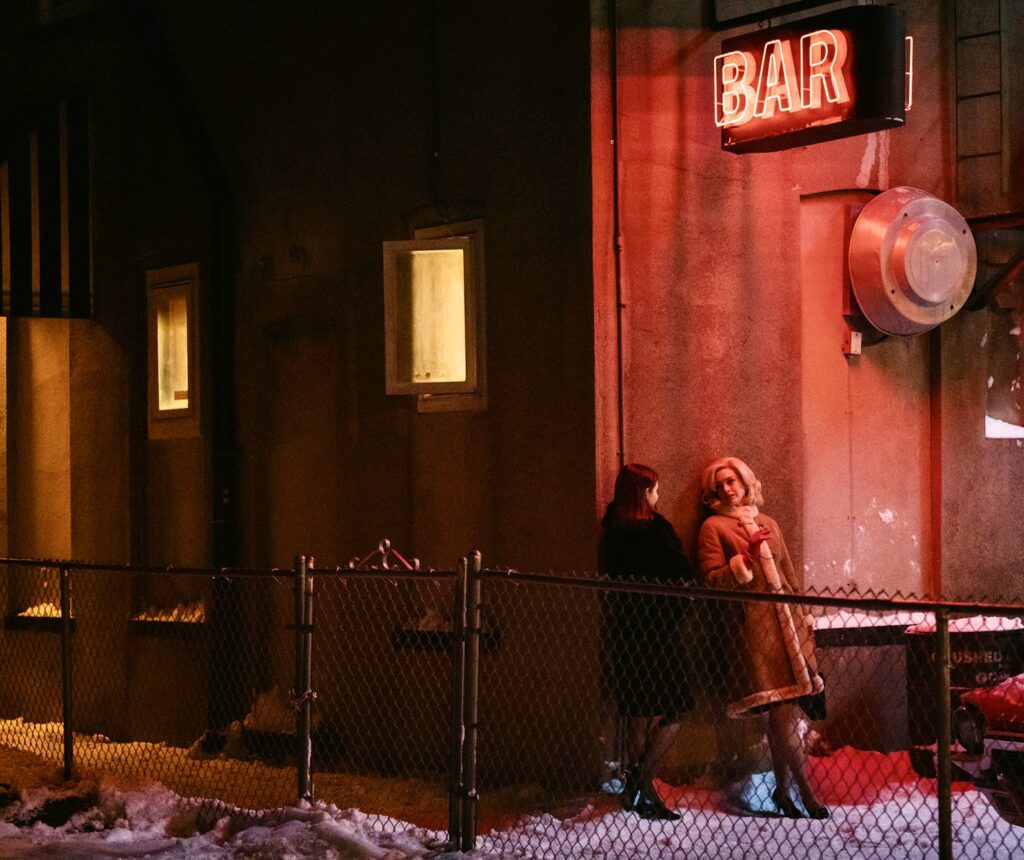
This is all very watchable, but it also bumps up against a strangely low ceiling. Oldroyd, perhaps limited by his source material (which I haven’t read), has crafted a persuasive portrait of a complicated heroine, yet he struggles to push her into new territory. Unlike Saint Maud, which demonstrated the courage to see its protagonist’s demons run their inevitable course, this movie fizzles to a disappointing non-ending, failing to provide either cleansing catharsis or tantalizing ambiguity.
To the extent Eileen works as well as it does—and to be clear, it’s an impressive achievement, both enjoyable and unsettling—it’s thanks to the caliber of the acting. Hathaway’s natural radiance slices through the mist, but there’s a reason the movie isn’t called “Rebecca.” McKenzie’s lead performance is hypnotic; without leaning too hard on her New England accent, she inhabits the role fully. Eileen is haunted and haunting, sweet and scary, and McKenzie’s rounded portrayal supplies the picture with both its ominous chill and its anguished longing. Eileen’s fraying mind may be shrouded in fog, but Eileen understands her perfectly.
Grade: B
Jeremy Beck is the editor-in-chief of MovieManifesto. He watches more movies and television than he probably should.
